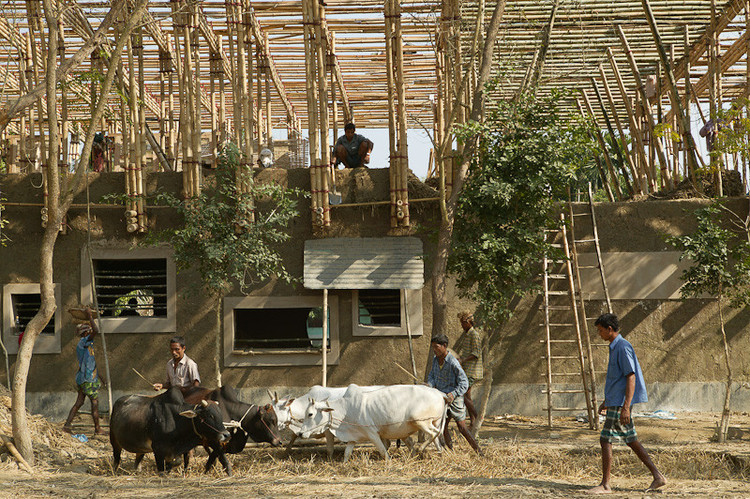Talking to the Louisiana Channel, German architect Anna Heringer outlines the way she works and her multi-disciplinary approach to architectural practice. Growing up in a small town at the Austrian-Bavarian border close to Salzburg - Heringer spent a year living and working in Bangladesh at the age of 19, a place that is now home to a majority of her office's projects. Heringer describes herself as a mix of things in addition to being an architect, describing herself as an activist and a development worker - using her creativity to explore ideas in a variety of forms and media.
As an architect, Anna is very conscious of the value of understanding the local context and sense of place when undertaking a new project, linking to her passion for creating architectural responses rooted in sustainability. "For me, it is essential that the materials are local, the energy sources are local, and with energy sources, I think of human labor". Saying that if human labor is not used, "we create a social problem." In tandem with the importance of local know-how and local building techniques, Anna is also steadfast about using local materials which are more environmentally-friendly and have less embodied energy, "We have fantastic local materials all around the world, we just need to see and be aware of them. Less concrete, more earth – we can’t continue to build as we do. Here in Germany, I figured out that the cheapest solution always is the least sustainable, while in Bangladesh the cheapest solution also is the most sustainable.”

Detailing her work in Bangladesh, Anna realizes the value of knowledge sharing in a cross-cultural context - where in addition to "sustainability being a synonym of beauty", architecture can also play a part on a social scale, as she explains using the example of the METI School project, how the builders of the project, with the wages they earned, then put that money back into the local community, purchasing goods from local markets.
I think architecture is a really powerful tool to shape our society. Just by the way, we choose our materials, construction processes, and how many people are included in the building we can really make an impact. To me, the essential question that I always have in the back of my mind when I am designing and deciding is: what if seven billion people would decide the same way? Would it contribute to social justice? To the environment? All these questions are central because I deeply believe that the world is not changing through one big decision. It’s the everyday small decisions that are really shaping our environment and society - Anna Heringer

Heringer's METI School won the Aga Khan Award for Architecture in 2007, utilizing sustainable bamboo frame construction in conjunction with historical building techniques using locally available earth. Anna Heringer is an honorary professor of the UNESCO Chair of Earthen Architecture, Building Cultures, and Sustainable Development, where she focuses on the use of natural building materials in architecture. Over the years, Anna has realized projects across continents - ranging from Asia to Africa and Europe. Together with Martin Rauch, she has developed the "Clay Storming" method - brainstorming using clay - that she uses to teach at various universities, including ETH Zurich, UP Madrid, TU Munich and GSD/Harvard.
To see more architecture videos, check ArchDaily's full coverage of Louisiana Channel's series of interviews.
News Via Louisiana Channel.














